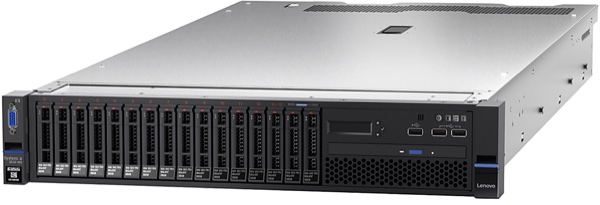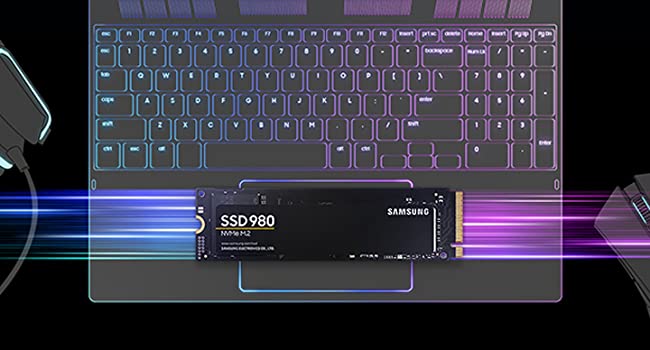
Rack Server Efficiency Hacks You Need to Know
Introduction
In today’s fast-paced and data-driven world, the demand for computing power continues to grow exponentially. Rack server have become the backbone of modern data centers, supporting a wide range of applications and services. However, with this increased reliance on rack servers comes the need for optimizing their efficiency to ensure both cost-effectiveness and environmental sustainability.
In this article, we will delve into the world of rack server efficiency hacks, revealing the essential strategies and techniques that every IT professional and data center manager should know. From hardware optimizations to software tweaks, we will explore a myriad of innovative approaches that can help you get the most out of your rack servers. Whether you are looking to reduce power consumption, increase processing capacity, or improve overall server performance, these efficiency hacks will prove invaluable in achieving your goals.
Choosing the Right Rack Server
In the ever-evolving landscape of IT infrastructure, selecting the right rack server is a critical decision that can significantly impact the performance, scalability, and efficiency of your data center or organization.
1. Define Your Requirements:
Begin by assessing your organization’s needs. Consider factors such as the workload, application requirements, and scalability. Are you running resource-intensive applications like virtualization or AI, or do you need a basic file server?
2. Hardware Specifications:
Evaluate the hardware specifications of the rack server, including CPU, RAM, storage capacity, and expansion slots. Ensure that the server can handle your current workload and has room for growth.
3. Form Factor:
Choose a form factor that fits your rack space and future expansion plans.
4. Redundancy and Reliability:
Consider the server’s redundancy features, such as redundant power supplies and hot-swappable components, to minimize downtime in case of hardware failures. Look for server brands known for their reliability.
5. Energy Efficiency:
Energy costs can be a significant part of your data center expenses. Select a server with energy-efficient components and features, such as power management tools and optimized cooling systems, to reduce your operational costs.
6. Management and Remote Access:
Look for servers that offer robust management and remote access capabilities. This includes features like out-of-band management (iLO, iDRAC), which allow you to monitor and manage the server even if it’s offline.
7. Compatibility:
Ensure that the rack server is compatible with your existing infrastructure, including networking equipment and storage solutions.
8. Budget:
Define your budget constraints and try to strike a balance between performance and cost-effectiveness. Consider total cost of ownership (TCO) over the server’s lifespan rather than just the initial purchase price.
9. Warranty and Support:
Investigate the warranty and support options provided by the server manufacturer. A reliable support system can be crucial for troubleshooting and maintenance.
10. Future Scalability:
Plan for future growth. Choose a server that allows for easy expansion, whether through additional CPU sockets, memory slots, or storage bays.
Optimizing Rack Server Hardware
Optimizing rack server hardware is essential for improving performance, efficiency, and reliability in data centers or server rooms. By maximizing the potential of your hardware, you can ensure that your servers deliver the best possible results for your organization’s specific needs.
1. CPU Selection:
- Choose CPUs (Central Processing Units) that align with your workload requirements.
- Opt for CPUs that support technologies like hyper-threading and virtualization to enhance multitasking and virtual machine (VM) performance.
2. Memory (RAM) Optimization:
- Ensure that your server has sufficient RAM to handle your workloads. Memory-intensive applications benefit greatly from ample RAM.
- Implement error-correcting code (ECC) RAM to reduce the risk of memory errors and system crashes.
3. Storage Solutions:
- Employ solid-state drives (SSDs) or NVMe drives for faster data access and improved application performance.
- Utilize RAID (Redundant Array of Independent Disks) configurations to enhance data redundancy and storage performance.
- Consider using tiered storage solutions to optimize data placement based on access patterns.
4. Network Connectivity:
- Invest in high-speed network interfaces (1 GbE, 10 GbE, or higher) to minimize network bottlenecks.
- Implement load balancing and teaming for network interfaces to improve fault tolerance and bandwidth utilization.
5. Power Efficiency:
- Configure power management settings to optimize power usage. Ensure that idle components enter low-power states when not in use.
- Invest in energy-efficient power supplies and cooling solutions to reduce operational costs.
6. Cooling and Ventilation:
- Maintain proper airflow within the server rack to prevent overheating. Ensure that hot air is efficiently exhausted.
- Use blanking panels and cable management systems to optimize airflow and reduce hot spots.
7. Remote Management:
- Implement remote management tools such as Integrated Lights-Out (iLO) or iDRAC to monitor and manage servers remotely.
- Enable alerting and automation features to proactively address hardware issues.
8. Firmware and Driver Updates:
- Regularly update server firmware (BIOS/UEFI), drivers, and operating system patches to improve stability and security.
- Keep an eye on manufacturer websites for updates and advisories.
9. Hardware Redundancy:
- Consider redundancy for critical components like power supplies, fans, and network adapters to minimize downtime in case of failures.
- Implement hot-swappable components to facilitate quick replacement.
10. Benchmarking and Monitoring:
- Use benchmarking tools to assess server performance and identify bottlenecks.
- Implement comprehensive monitoring solutions to track hardware health, performance metrics, and resource utilization.
11. Decommission Outdated Hardware:
- Regularly evaluate and retire older hardware that may no longer meet performance or efficiency standards. Reallocate resources to newer, more efficient servers.
12. Virtualization and Containerization:
- If applicable, leverage virtualization or containerization technologies to consolidate workloads and optimize hardware utilization.
Rack Server Configuration Best Practices
Configuring rack servers effectively is crucial to ensure optimal performance, reliability, and security within your data center or server room. Following best practices in server configuration can help you maximize the efficiency of your hardware and minimize the risk of downtime or security breaches.
1. Documentation and Labeling:
- Maintain detailed documentation of your server configurations, including hardware specifications, network settings, and software configurations.
- Label servers, cables, and components with clear, unique identifiers to simplify troubleshooting and maintenance.
2. Standardization:
- Establish standard configurations for your rack servers to simplify management and maintenance.
- Use consistent hardware models, operating systems, and software versions where possible.
3. Security Hardening:
- Implement security best practices by disabling unnecessary services and features.
- Utilize strong, unique passwords and consider multi-factor authentication for server access.
4. BIOS/UEFI Settings:
- Review and configure BIOS/UEFI settings to align with your workload requirements and power management policies.
- Enable virtualization support if running virtual machines (VMs).
5. RAID Configuration:
- Set up RAID configurations to provide redundancy and fault tolerance for critical data.
- Choose the appropriate RAID level (e.g., RAID 1, RAID 5, or RAID 10) based on your storage needs.
6. Storage Partitioning:
- Partition storage drives effectively to separate operating system files, applications, and data.
- Use separate partitions for system and data backups.
7. Network Configuration:
- Configure network interfaces with static IP addresses for critical servers.
- Implement network redundancy through teaming or bonding for increased reliability.
- Isolate network segments or VLANs for enhanced security.
8. Remote Management:
- Enable remote management tools (e.g., iLO, iDRAC) for remote monitoring and troubleshooting.
- Ensure secure access to these tools, limiting access to authorized personnel.
9. Monitoring and Alerts:
- Implement server monitoring solutions to track performance, resource utilization, and hardware health.
- Configure alerting systems to notify administrators of critical events or issues.
10. Backups and Disaster Recovery:
- Establish regular backup routines for both data and server configurations.
- Test disaster recovery plans to ensure data and system recovery in case of failures.
11. Load Balancing:
- If applicable, configure load balancing for web or application servers to distribute traffic evenly and improve availability.
12. Documentation Updates:
- Keep server documentation up to date to reflect changes, additions, or modifications.
- Document troubleshooting procedures and contact information for support.
13. Cable Management:
- organized and tidy cable management to improve airflow and reduce the risk of accidental disconnections.
14. Cooling and Environmental Monitoring:
- Monitor server room temperature and humidity to prevent overheating and ensure optimal conditions for equipment.
15. Regular Audits and Reviews:
- Conduct regular audits of server configurations and security settings to identify and address potential vulnerabilities or misconfigurations.
Conclusion
In conclusion, optimizing rack server hardware and configuration is pivotal in today’s technology-driven world. These practices are essential for organizations seeking to maximize performance, reliability, and efficiency while minimizing downtime and security risks. By carefully selecting the right hardware, configuring servers effectively, and following best practices, you can build a robust and resilient infrastructure that meets your organization’s needs.
Remember that technology is constantly evolving, so staying up to date with the latest hardware and configuration best practices is essential for maintaining a competitive edge and ensuring your IT infrastructure remains efficient and secure.



